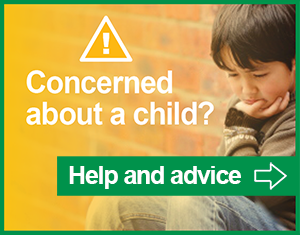Child Sexual Abuse
‘Working Together to Safeguard Children’ (2018) definition to define child sexual abuse:
- ‘Involves forcing or enticing a child or young person to take part in sexual activities, not necessarily involving a high level of violence, whether or not the child is aware of what is happening. The activities may involve physical contact, including assault by penetration (for example, rape or oral sex) or non-penetrative acts such as masturbation, kissing, rubbing and touching outside of clothing. They may also include non-contact activities, such as involving children in looking at, or in the production of, sexual images, watching sexual activities, encouraging children to behave in sexually inappropriate ways, or grooming a child in preparation for abuse (including via the internet). Sexual abuse is not solely perpetrated by adult males. Women can also commit acts of sexual abuse, as can other children.’
The definition of child sexual abuse in the family environment, includes relationships between the victim and the perpetrator which are mediated by the family or family home. Parents/carers, siblings, aunts, uncles and cousins fall within this definition. Some adults who play a less direct role in the family life can also be included, such as neighbours, and family friends, where the familial context of the relationship between the victim and the perpetrator would exacerbate the impact of the abuse on the victim and undermine their ability to access help and support.
Professionals who suspect or have identified that a child is being sexually abused or has been sexually assaulted should use the CSCP Procedures Manual![]() .
.
Prevalence
Sexual abuse is usually hidden from view. Children and young people may not always understand that they are being sexually abused, they may be too young, too scared or too ashamed to tell anyone what is happening to them. However, there are a number of different sources of information which help us to build up a picture of the scale of abuse. The NSPCC helpline has received on average 26 contacts a day from people concerned a child is being or has been sexually exploited and/or abused. This reached a record high of 4,735 reports, a 36% increase in the first six months of 2021/22 when compared to the same six months of the previous year.
For more information about child sexual abuse go to the NSPCC website here Preventing Child Sexual Abuse & Keeping Children Safe | NSPCC
Child Exploitation (CE)
Child exploitation of children and young people has been identified across the United Kingdom, in both rural and urban areas. It affects boys and young men as well as girls and young women. It robs children of their childhood and can have a serious long-term impact on every aspect of their lives, health and education. It damages the lives of families and carers and can lead to family break-ups. Child exploitation of children and young people is a crime.
For more information about Child exploitation including Child Exploitation Risk Assessment Review (CERAR) go to Child Exploitation (CE) cumbriasafeguardingchildren.co.uk
The Bridgeway Sexual Assault Service provide advice and online resources to help you offer the right support and advice to your service users.
The Bridgeway is here 24/7, 365 days a year to offer you information and guidance if someone discloses to you that they have been raped or sexually assaulted, regardless of when it happened.
The Bridgeway - Supporting the victims of Rape or Serious Sexual Assault
Child Abuse
Definitions and signs of child abuse - Guidance for professionals who work with children on how to recognise the signs of child abuse
Support Services
Resources for Professionals
